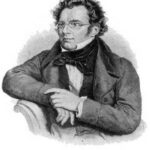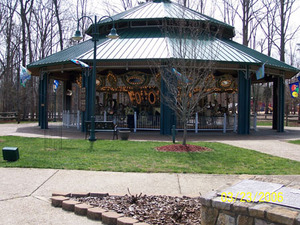In Mary Wollstonecraft Shelley’s novel Frankenstein or, The Modern Prometheus, the character Walton takes a peculiar interest in a man that he finds drifting on the ice in the Arctic Ocean. This man is Frankenstein, and after many days of recovery, he begins to tell Walton the story of how he came to the ice. Walton is attracted to Frankenstein’s story because he and Frankenstein are very similar people, especially in character as Walton’s interest in Frankenstein stems from Walton’s own similar goals and experiences.
Frankenstein wants to create life while Walton wishes to have a friend, both of which are desires for a human connection. In the opening pages of the book, in a letter to his sister, Walton says “…I have one want which I have never yet been able to satisfy; and the absence of the object of which I now feel as a most severe evil. I have no friend.” (Pg. 13, Ln. 8-10). Frankenstein also is driven by strong desires. He says that,
No one can conceive the variety of feelings which bore me onwards, like a hurricane… No father could claim the gratitude of his child so completely as I should deserve their’s. Pursuing these reflections, I thought, that if I could bestow animation upon lifeless matter, I might in process of time (although I now found it impossible) renew life where death had apparently devoted the body to corruption… These thoughts supported my spirits, while I pursued my undertaking with unremitting ardour.(Pg. 49, Ln. 12-24).
Walton later expresses that Frankenstein is becoming something closer to a friend, meaning that he has met his goal. He says that, “I have said in one of my letters, my dear Margaret, that I should find no friend on the wide ocean; yet I have found a man who, before his spirit had been broken by misery, I should have been happy to have possessed as the brother of my heart.” (Pg. 22 Ln. 5-8). He goes on to speak of how his enjoyment of Frankenstein’s company increases daily. After their friendship grows, Walton is drawn into Frankenstein’s story when Frankenstein mysteriously tells him that, “I once had a friend, the most noble of human creature, and am entitled, therefore, to judge respecting of friendship. You have hope, and the world before you, and have no cause for despair. But I – I have lost every thing, and cannot begin life anew.” (Pg. 23, Ln. 16-21). Frankenstein is consumed by the idea of death, and it is because of this aversion to death that he creates the Creature.
Frankenstein and Walton reach the place furthest from their goals; Walton goes to the Arctic Ocean, entirely lacking human life, while Frankenstein creates a being from death that ultimately just causes more death, circumventing his goal of averting death. Frankenstein, in fulfilling his greatest dream of creating life from death, destroys his family, friends, and conscience. He says that:
I beheld the accomplishment of my toils… How can I describe my emotions at this catastrophe, or how delineate the wretch whom with such infinite pains and care I had endeavoured to form? His limbs were in proportion, and I had selected his features as beautiful. Beautiful! – Great God! His yellow skin scarcely covered the work of muscles and arteries beneath; his hair was of a lustrous black, and flowing; his teeth of a pearly whiteness; but these luxuriances only formed a more horrid contrast with his watery eyes, that seemed almost of the same colour as the dun white sockets in which they were set, his shrivelled complexion, and straight black lips. (Pg. 52, Ln. 3-23).
Frankenstein has created the being of his toils, but it has caused him great misery, and it will continue to do so, as the creature destroys his family and life. He tries to find a way to stop death, but he ends up causing more death and bringing misery upon himself. So Frankenstein eventually decides that he must defeat the Creature, and chases it onto the frozen wastes, where Walton finds Frankenstein starving and weak. Walton also abandons any hope of finding friendship when he leaves the port of Archangel with his ship and sails for the North Pole. He destroys his chance of finding friendship while Frankenstein destroys his chance of preventing death.
Frankenstein and Walton achieve their goals in unexpected places and through unexpected means. Frankenstein’s final wish, to destroy the Creature, is fulfilled by Frankenstein’s own death. At the closing of the book, after Frankenstein has succumbed to his injuries and sickness, the Creature enters the cabin of Walton’s ship where Frankenstein’s body lay. He concludes his final speech with:
But soon… I shall die, and what I now feel be no longer felt. Soon these burning miseries will be extinct. I shall ascend my funeral pile triumphantly, and exult in the agony of torturing flames. The light of that conflagration will fade away; my ashes will be swept into the sea by the winds. My spirit will sleep in peace; or if it thinks, it will surely not think thus. Farewell. (Pg. 221, Ln. 3-9)
Frankenstein’s death causes the Creature to kill itself. Equally strange is how Walton’s wish for friendship is completed only by traveling to the place farthest from human interaction.
In Frankenstein, Walton feels attachment to Frankenstein because of the ways in which their journeys reflect each other. Frankenstein and Walton both have goals grounded in humanity, travel far from where these goals could be reached, but unexpectedly still complete these goals. This naturally leads to Walton’s attack of the Creature in the conclusion of the book, and explains the cause of the statements of finding company in his letters to his sister. Walton has found his friend in Frankenstein.




